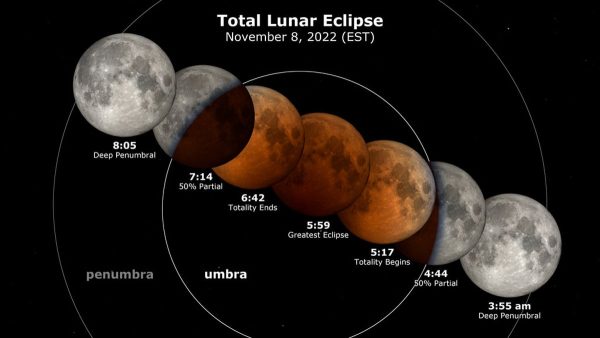People across much of the Americas, Australia, the Pacific islands, and Asia will be able to see the moon turn the color of Mars as it moves into Earth’s shadow on Nov. 8 at 803 hours Greenwich Mean Time.
For viewers in the eastern U.S. and Canada, that means the total lunar eclipse will begin at 3:03 a.m., while moon-gazers on the West Coast can get ready around midnight after Monday, Nov. 7.
The “blood moon” eclipse will be the last time Earth completely covers the moon from direct sunlight until March 14, 2025. The previous total lunar eclipse occurred this May 15 and May 16, depending on one’s terrestrial vantage point.
The initial phase of the eclipse will last about an hour until 4:09 EST, when the partial eclipse will start to become visible.

Normally, the moon reflects light from the sun to varying degrees during its fortnightly cycles from new to full moon and back. But during the brief period of the eclipse, the only light reaching the moon’s surface comes from the rays passing through Earth’s atmosphere, which gives the moon a rusty red or orange tint.
Success
You are now signed up for our newsletter
Success
Check your email to complete sign up
The total eclipse is achieved at 5:16 a.m. EST and will last for about an hour and a half to 6:41 a.m.
Most of North and Central America will be able to view the eclipse, while those in Europe and the Middle East will have to wait until 2025. In Asia, the eclipse will be the 15th of the 10th month in the Chinese lunar calendar.













